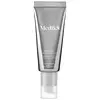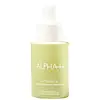What's inside
What's inside
 Key Ingredients
Key Ingredients

 Benefits
Benefits

 Concerns
Concerns

 Ingredients Side-by-side
Ingredients Side-by-side

Water
Skin ConditioningCaprylic/Capric Triglyceride
MaskingGlycerin
HumectantIsododecane
EmollientCyclodextrin
AbsorbentCetearyl Olivate
Sodium Acrylate/Sodium Acryloyldimethyl Taurate Copolymer
Emulsion StabilisingCetearyl Alcohol
EmollientSorbitan Olivate
EmulsifyingTocopheryl Acetate
AntioxidantSqualane
EmollientHydroxyethyl Acrylate/Sodium Acryloyldimethyl Taurate Copolymer
Emulsion StabilisingHydroxyacetophenone
AntioxidantRubus Chamaemorus Seed Oil
Skin Conditioning3-O-Ethyl Ascorbic Acid
Skin ConditioningPhenoxyethanol
PreservativeHydroxypropyl Methylcellulose
Emulsion StabilisingPentylene Glycol
Skin ConditioningDaucus Carota Sativa Seed Oil
EmollientRetinal
Skin ConditioningSodium Hyaluronate
HumectantTetrahexyldecyl Ascorbate
AntioxidantAlumina
AbrasiveIsostearic Acid
CleansingLecithin
EmollientPolyglyceryl-3 Polyricinoleate
EmulsifyingLonicera Japonica Flower Extract
Skin ConditioningLonicera Caprifolium Flower Extract
PerfumingPolyhydroxystearic Acid
EmulsifyingDisodium EDTA
Stearic Acid
CleansingEthylhexylglycerin
Skin ConditioningPolysorbate 60
EmulsifyingSorbitan Isostearate
EmulsifyingBHT
AntioxidantVanilla Planifolia Fruit Extract
Skin ConditioningSodium Polyaspartate
HumectantDipteryx Odorata Bean Extract
MaskingCoumarin
PerfumingCI 14700
Cosmetic ColorantCI 77891
Cosmetic ColorantWater, Caprylic/Capric Triglyceride, Glycerin, Isododecane, Cyclodextrin, Cetearyl Olivate, Sodium Acrylate/Sodium Acryloyldimethyl Taurate Copolymer, Cetearyl Alcohol, Sorbitan Olivate, Tocopheryl Acetate, Squalane, Hydroxyethyl Acrylate/Sodium Acryloyldimethyl Taurate Copolymer, Hydroxyacetophenone, Rubus Chamaemorus Seed Oil, 3-O-Ethyl Ascorbic Acid, Phenoxyethanol, Hydroxypropyl Methylcellulose, Pentylene Glycol, Daucus Carota Sativa Seed Oil, Retinal, Sodium Hyaluronate, Tetrahexyldecyl Ascorbate, Alumina, Isostearic Acid, Lecithin, Polyglyceryl-3 Polyricinoleate, Lonicera Japonica Flower Extract, Lonicera Caprifolium Flower Extract, Polyhydroxystearic Acid, Disodium EDTA, Stearic Acid, Ethylhexylglycerin, Polysorbate 60, Sorbitan Isostearate, BHT, Vanilla Planifolia Fruit Extract, Sodium Polyaspartate, Dipteryx Odorata Bean Extract, Coumarin, CI 14700, CI 77891
Water
Skin ConditioningGlycerin
HumectantMethyl Gluceth-20
HumectantPolysorbate 80
EmulsifyingPolyacrylate Crosspolymer-6
Emulsion StabilisingPhenoxyethanol
PreservativeSqualane
EmollientRetinol
Skin ConditioningPolysorbate 20
EmulsifyingSimmondsia Chinensis Seed Oil
EmollientSolanum Lycopersicum Fruit Extract
AntioxidantPrunus Amygdalus Dulcis Oil
Skin ConditioningOenothera Biennis Oil
EmollientMacadamia Ternifolia Seed Oil
EmollientCaprylyl Glycol
EmollientSodium Stearoyl Glutamate
CleansingDisodium EDTA
Citric Acid
BufferingWater, Glycerin, Methyl Gluceth-20, Polysorbate 80, Polyacrylate Crosspolymer-6, Phenoxyethanol, Squalane, Retinol, Polysorbate 20, Simmondsia Chinensis Seed Oil, Solanum Lycopersicum Fruit Extract, Prunus Amygdalus Dulcis Oil, Oenothera Biennis Oil, Macadamia Ternifolia Seed Oil, Caprylyl Glycol, Sodium Stearoyl Glutamate, Disodium EDTA, Citric Acid
 Reviews
Reviews

Ingredients Explained
These ingredients are found in both products.
Ingredients higher up in an ingredient list are typically present in a larger amount.
Disodium EDTA plays a role in making products more stable by aiding other preservatives.
It is a chelating agent, meaning it neutralizes metal ions that may be found in a product.
Disodium EDTA is a salt of edetic acid and is found to be safe in cosmetic ingredients.
Learn more about Disodium EDTAGlycerin is already naturally found in your skin. It helps moisturize and protect your skin.
A study from 2016 found glycerin to be more effective as a humectant than AHAs and hyaluronic acid.
As a humectant, it helps the skin stay hydrated by pulling moisture to your skin. The low molecular weight of glycerin allows it to pull moisture into the deeper layers of your skin.
Hydrated skin improves your skin barrier; Your skin barrier helps protect against irritants and bacteria.
Glycerin has also been found to have antimicrobial and antiviral properties. Due to these properties, glycerin is often used in wound and burn treatments.
In cosmetics, glycerin is usually derived from plants such as soybean or palm. However, it can also be sourced from animals, such as tallow or animal fat.
This ingredient is organic, colorless, odorless, and non-toxic.
Glycerin is the name for this ingredient in American English. British English uses Glycerol/Glycerine.
Learn more about GlycerinPhenoxyethanol is a preservative that has germicide, antimicrobial, and aromatic properties. Studies show that phenoxyethanol can prevent microbial growth. By itself, it has a scent that is similar to that of a rose.
It's often used in formulations along with Caprylyl Glycol to preserve the shelf life of products.
Squalane is an emollient that helps the skin hold onto moisture. It's an oily liquid that occurs naturally in certain types of fish and plant oils.
Because squalane boosts hydration in the skin, it also comes with plenty of benefits: it is an antioxidant and can help fight free radicals and skin damage. Squalane is also found to have a detoxifying effect when applied.
Squalane comes from squalene, which occurs naturally within the sebum of our skin. It is one of the oils our skin produces to keep itself hydrated. Squalane is the hydrogenated version of squalene and has a longer shelf life.
Research shows that squalane is non-irritating (even at 100% concentration).
In general, it's a fantastic ingredient. It does a great job at hydrating the skin, and it's suitable for those with sensitive skin.
The source of squalane may impact malassezia / fungal acne. This is because olive oil derived squalane can contain impurities such as fatty acids and plant waxes. Sugarcane derived squalane is recommended for anyone with malassezia concerns.
Is squalane vegan?
This depends on the source. Squalane can be derived from both plants and animals. Most squalane used in skincare comes from plants.
Please note: the source of squalane is only known if disclosed by the brand. We recommend reaching out to the brand if you have any questions about their squalane.
Read more about squalene with an "e".
Is squalane an oil?
Squalane is often called an oil, but it’s technically not; it’s a hydrocarbon, meaning it’s only made of carbon and hydrogen, unlike true oils which are triglycerides made of fatty acids and glycerol.
The term “oil-free” isn’t regulated, so companies can define it however they want. Some exclude all oils, while others just avoid mineral oil or comedogenic oils.
While some people avoid oils thinking they cause breakouts, the right kind of oil (or oil-like ingredient like squalane) can actually help balance and hydrate your skin. It’s worth testing out simple oils or squalane to see what works best for your skin.
Learn more about SqualaneWater. It's the most common cosmetic ingredient of all. You'll usually see it at the top of ingredient lists, meaning that it makes up the largest part of the product.
So why is it so popular? Water most often acts as a solvent - this means that it helps dissolve other ingredients into the formulation.
You'll also recognize water as that liquid we all need to stay alive. If you see this, drink a glass of water. Stay hydrated!
Learn more about Water